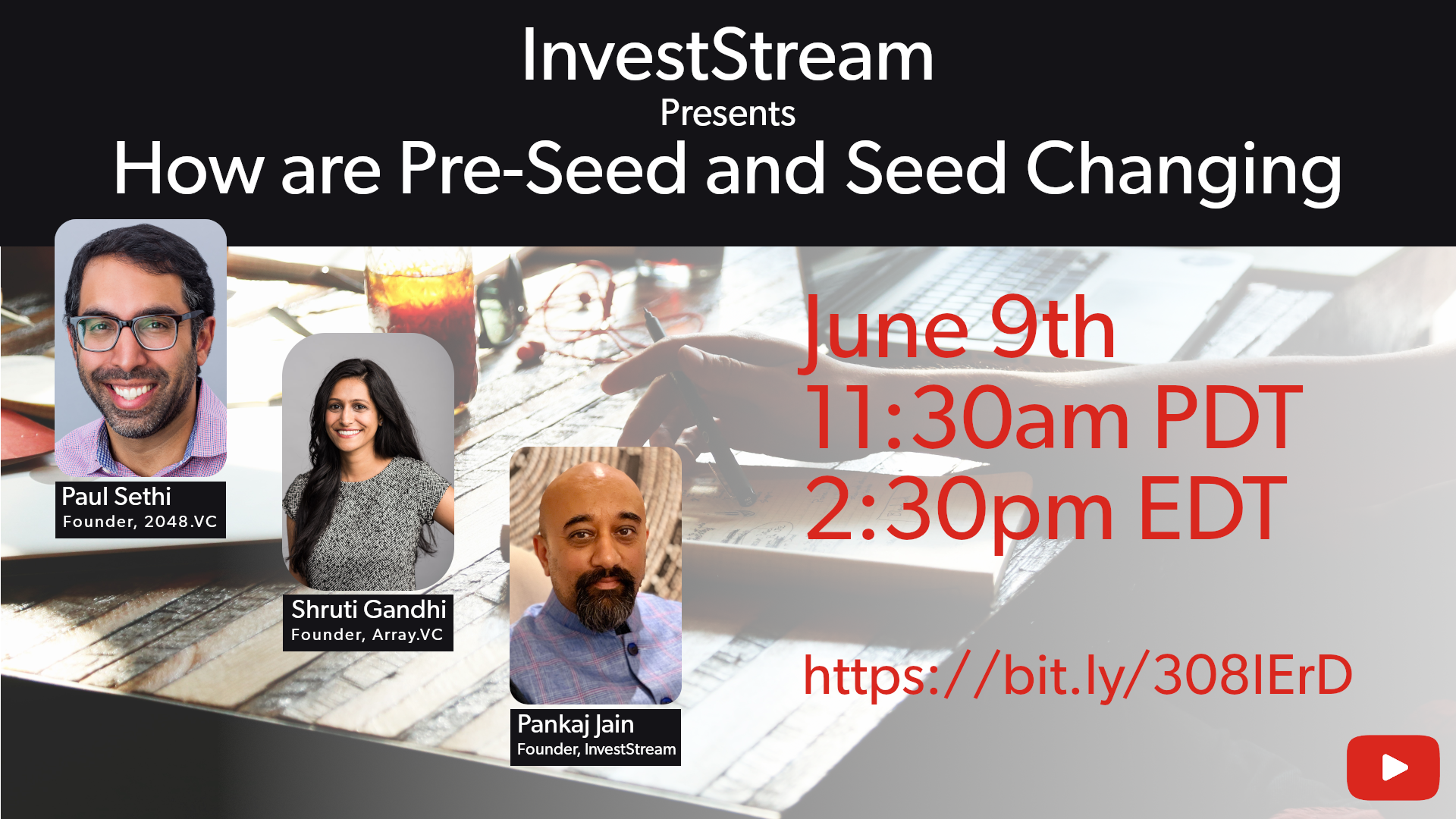Tag: Startup
-
3 Quick Tips for Pitching Your Startup Over a Video Call
In a post covid-19 environment, startup founders and investors are adapting rapidly to contactless funding. Pitching over Zoom, Google Meet, FaceTime or any video chat platform is becoming commonplace. Quite a few investors I’ve spoken to have gone from first contact to funding a startup all over video calls. Sure, video calls are convenient but…
-

How are Pre-Seed and Seed Changing in 2020?
A lot is changing in the startup world. Even before getting hit with COVID-19, the definitions of pre-seed, seed, post-seed/pre-series A were changing at a fast clip. Many early-stage VCs were moving downstream, writing larger checks and investing in later rounds. At the same time, larger, late-stage VCs were either ramping up their scout programs…
-
Watch the equity dilution in your startup!
Raising money for a startup has become a default option for most founders. Very few even consider bootstrapping anymore. That’s neither a good or bad thing and not the point of this post. Unfortunately, not as many founders or investors discuss equity dilution as much as they should. Too many startups give up too much…
-
A New Livestream Series – The Raise
As founders, a VC, angel and, now, through our advisory business at Founder Craft, we get asked for advice or “feedback” a lot. The questions range across a wide spectrum. However, they have one thing in common – they as for our opinions. My Partner at Founder Craft, Gregarious and I have been doing some…
-

Twelve Years of Indian Startups – Part II
After landing in India, I realized the bureaucracy was going to make it really difficult to get started. I won’t bore you with the details but it took me eight months from the day I landed in India to having all of the required papers in place in order to setup a Private Limited company…